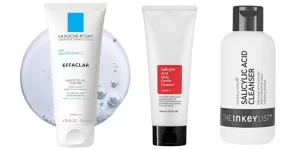
What’s the use of the skincare beginners guide?
Let’s face it – we all want that gorgeous, Instagram-worthy skin that makes us feel like a million bucks.
But here’s the thing: building a skincare routine is not just about looking good, it’s about feeling good too!
Taking care of your skin is essential to your overall health and well-being, and it’s never too early (or too late!) to start.
Now, I know what you’re thinking – “how do I even begin?”.
Well, the first step is to identify your skin type. Are you oily, dry, sensitive, or maybe a combination of all three?
Knowing your skin type will help you choose the right products that work best for you. Don’t worry, we’ll get into all the details in a bit.
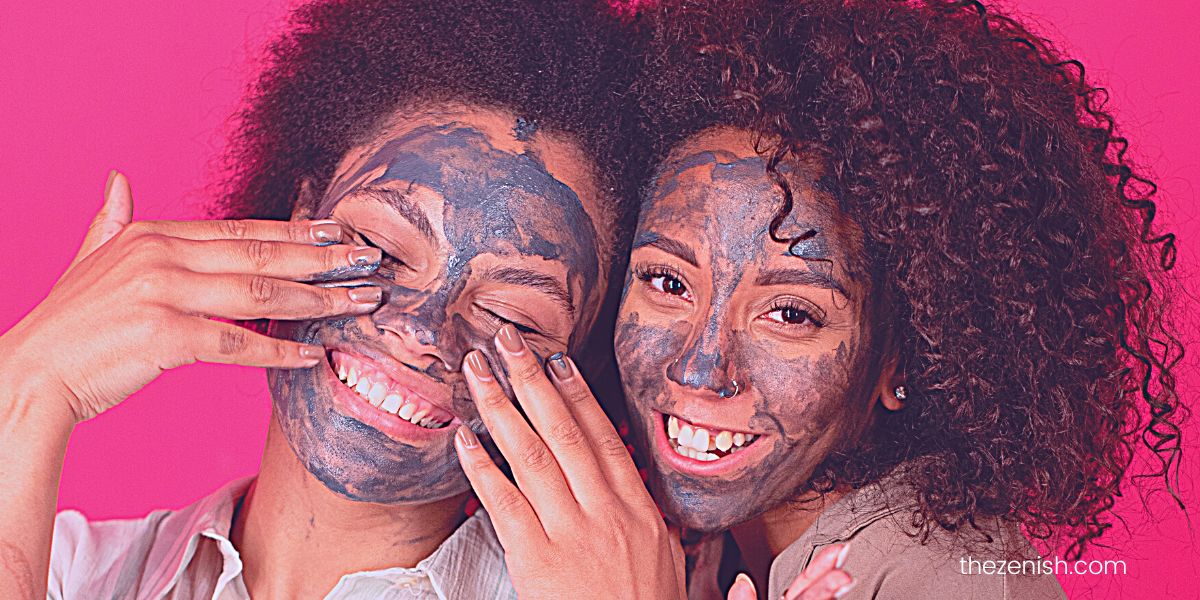
In this skincare beginner’s guide, I’m going to take you through all the steps of a basic skincare routine, help you identify your skin type, and provide some tips and tricks along the way.
Let’s do this!
How to identify your skin type

Alright, let’s figure out your skin type! Don’t fret, it’s simpler than you may think!
First up, let’s talk about the four main skin types: oily, dry, combination, and sensitive. Here’s a brief summary of each type:
- Oily skin: This skin type is characterized by excess sebum (that’s just a fancy word for oil) production. If you’re constantly blotting your T-zone throughout the day, you may have oily skin.
- Dry skin: If your skin feels tight, flaky, or itchy, you may have dry skin. This skin type lacks natural oils and can be prone to fine lines and wrinkles.
- Combination skin: As the name suggests, this skin type is a combination of both oily and dry areas. Usually, the T-zone (forehead, nose, and chin) is oily, while the cheeks are dry.
- Sensitive skin: This skin type is easily irritated and can be prone to redness, itching, and dryness. If you have sensitive skin, you’ll want to look for products that are fragrance-free and gentle.
Now, take a good look at your skin in the mirror. Does it feel oily or dry?
Are there areas of your face that are more prone to breakouts?
Paying attention to how your skin feels and behaves will help you determine your skin type.
Remember, everyone’s skin is different, so don’t be afraid to experiment and find what works best for you.
At the end of the day it’s all about trial and error, and taking the time to give your skin the TLC it deserves. Happy skin, happy life!
The basic steps of a skincare routine
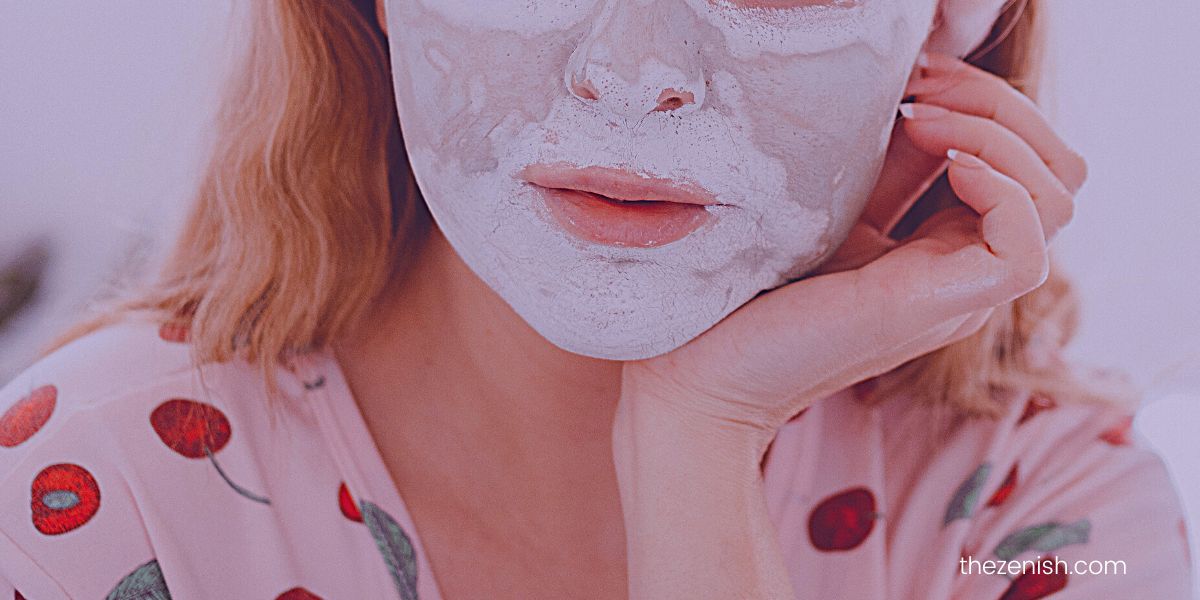
Okay, so you’ve got your skin type figured out – now it’s time to start building your routine!
Don’t worry, it’s not as complicated as it may seem.
The basic steps of a skincare routine are cleansing, toning, moisturizing, and sun protection. Let’s break it down:
Step #1
Cleansing
This is the first step in any skincare routine.
It’s important to remove all the dirt, oil, and makeup from your face before you apply any other products.
You can use a cleanser that’s specifically designed for your skin type, or a gentle, non-foaming option like a cream or gel cleanser or even micellar water.
Related posts:
- 23 Best facial cleansers for dark spots and hyperpigmentation
- Cleansing oil vs makeup remover: which one is better for your skin?
Step #2
Toning
Toning is an optional step, but it can be beneficial for some skin types.
A toner can help balance the pH of your skin, remove any residual dirt or oil, and prepare your skin for the next steps in your routine.
Look for a toner that’s alcohol-free and gentle on your skin.
Step #3
Moisturizing
Whether you have dry or oily skin, moisturizing is a crucial step in any skincare routine.
Moisturizers help to hydrate your skin, prevent water loss, and keep your skin looking plump and youthful.
You can choose a moisturizer that’s specifically designed for your skin type, or opt for a lightweight, non-comedogenic option.
Step #4
Sun protection
Last but not least, it’s important to protect your skin from the sun’s harmful rays.
Even on cloudy days, UV rays can still penetrate your skin and cause damage.
Look for a sunscreen with an SPF of at least 30, and reapply throughout the day as needed.
And that’s it – the basic steps of a skincare routine!
Of course, you can always add in other products like serums or masks, but these four steps are the foundation of any good routine.
Your skin will thank you for it!
Skincare beginners guide: identifying products for your skin type
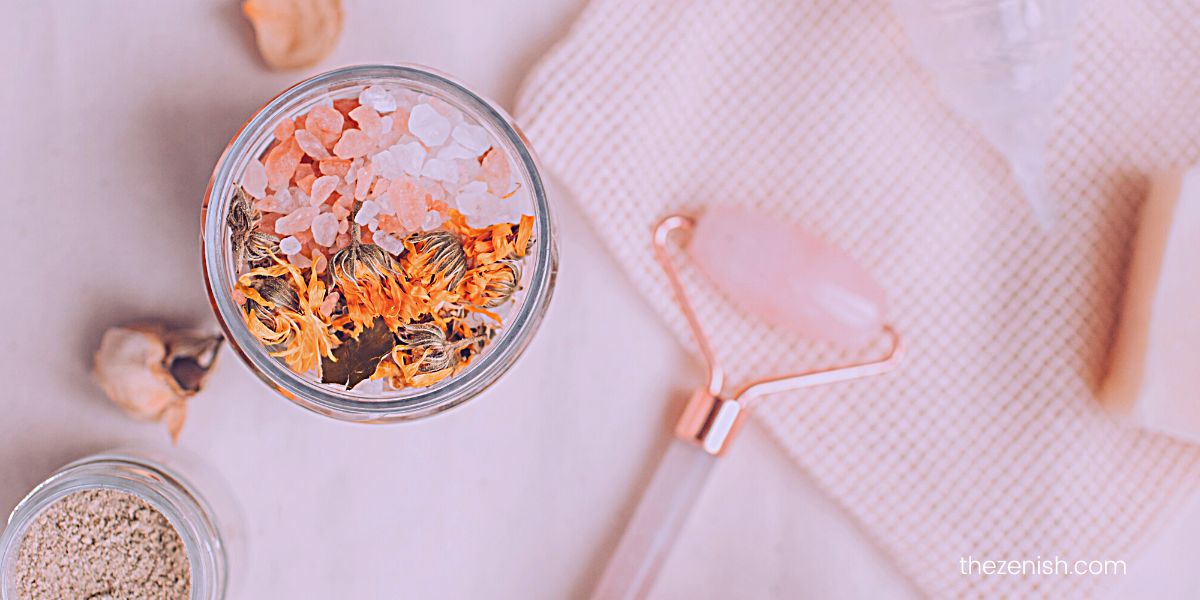
Okay, so now you know your skin type and the basic steps of a skincare routine – but how do you choose the right products for your skin?
Don’t worry, I’ve got you covered!
First things first, always try to choose products for your skin type and when I’m don’t opt for gentler product options.
This will help ensure that the product doesn’t cause any irritation or make your skin concerns worse.
Oily skin
If you have oily skin, look for lightweight, oil-free products that won’t clog your pores.
You may also want to choose products that contain salicylic acid or other exfoliating ingredients to help keep your skin clear and smooth.
Dry skin
If you have dry skin, look for products that are rich in emollients and humectants.
Emollients like petrolatum, shea butter or jojoba oil will help to soften and soothe your skin, while humectants like glycerin or hyaluronic acid will help to attract and retain moisture.
Combination skin
If you have combination skin, you’ll want to choose products that can balance your skin’s needs.
Look for lightweight, non-greasy moisturizers that won’t weigh down your oily areas, but also won’t leave your dry areas feeling parched.
Sensitive skin
If you have sensitive skin, look for products that are fragrance-free and free of common irritants like alcohol or sulphates.
You may also want to choose products that contain soothing ingredients like aloe vera or chamomile.
Remember, finding the right products for your skin type is a process of trial and error.
So don’t be afraid to experiment and find what works best for you.
And always remember to patch test any new products before applying them all over your face.
Your skin is unique, so take the time to give it the love and attention it deserves!
Product recommendations for each skin type
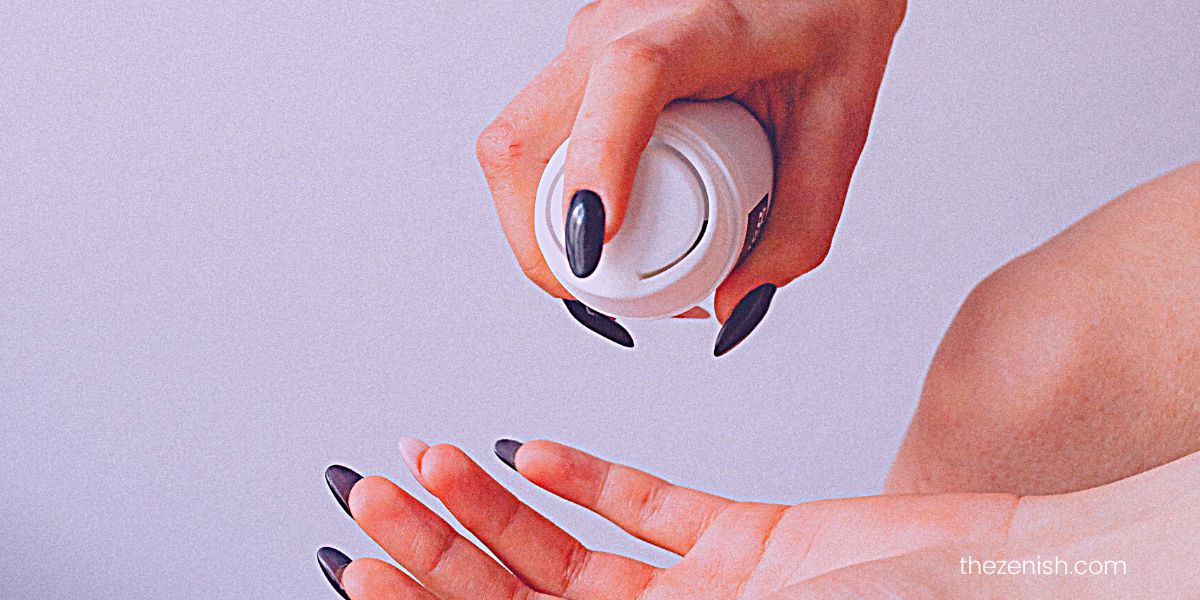
Choosing the right skincare products for your skin type can be a bit overwhelming, but with a little know-how, you can find the perfect products to help your skin look and feel its best.
| this post may contain affiliate links, which means if you purchase from one of these links, I may receive a small commission at no additional cost to you. |
Here are some product recommendations for each skin type:
Dry skin
If you have dry skin, look for products that will help to hydrate and moisturize your skin.
Try using a gentle cleanser like Cetaphil Gentle Skin Cleanser, followed by a rich moisturizer like CeraVe Moisturizing Cream. You might also consider using a hydrating serum like The Ordinary Hyaluronic Acid 2% + B5.
Oily skin
For oily skin, it’s important to look for products that won’t clog your pores or add extra oil to your skin.
Try using a gentle foaming cleanser like Neutrogena Oil-Free Acne Wash, followed by a lightweight, oil-free moisturizer like La Roche-Posay Effaclar Mat Moisturizer.
You might also consider using a salicylic acid treatment like Paula’s Choice Skin Perfecting 2% BHA Liquid Exfoliant to help control oil production.
Combination skin
If you have combination skin, look for products that will help to balance your skin’s needs.
Try using a gentle cleanser like CeraVe Hydrating Facial Cleanser, followed by a lightweight moisturizer like Kiehl’s Ultra Facial Cream.
You might also consider using a toner like Thayers Witch Hazel Toner to help balance your skin’s pH.
Sensitive skin
If you have sensitive skin, look for products that are free of harsh ingredients that can cause irritation.
Try using a gentle, fragrance-free cleanser like Vanicream Gentle Facial Cleanser, followed by a soothing moisturizer like Avene Tolerance Extreme Emulsion.
You might also consider using a facial oil like The Ordinary 100% Plant-Derived Squalane to help nourish and protect your skin.
Finding the right skincare products for your skin type can take some trial and error, so be patient.
And remember to patch-test any new products before using them all over your skin!
How to build your skincare routine
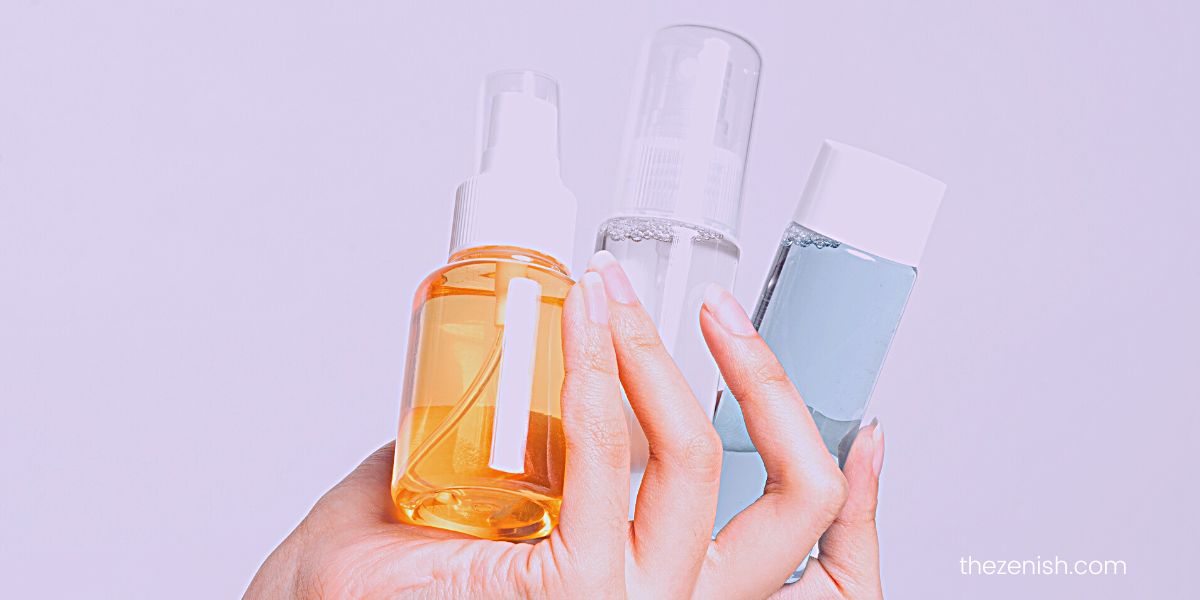
Building your skincare routine can seem intimidating at first, but it’s actually pretty straightforward!
Here are 6 tips to help you build your own personalized routine:
- Start with the basics: As I mentioned earlier, the basic steps of a skincare routine are cleansing, toning, moisturizing, and sun protection. Start with these four steps, and then you can add additional products as needed.
- Choose products for your skin type: Make sure you’re choosing products that are specifically designed for your skin type. This will help ensure that the products work effectively and don’t cause any irritation.
- Consider your skin concerns: Do you struggle with acne, fine lines, or hyperpigmentation? Look for products that are formulated to target those specific concerns. This could include ingredients like retinoids for anti-aging, benzoyl peroxide for acne, or vitamin C for brightening.
- Don’t overdo it: It can be tempting to try every new product that comes out, but it’s important not to overwhelm your skin with too many products. Start with a simple routine and gradually add in additional products as needed.
- Be consistent: Skincare is all about consistency! It’s important to use your products regularly and to stick with your routine, even if you’re not seeing immediate results. It can take time for your skin to adjust to new products and for you to see a noticeable improvement.
- Listen to your skin: Pay attention to how your skin is reacting to your routine. If you notice any irritation, dryness, or breakouts, it may be a sign that a product isn’t working for you. Don’t be afraid to make adjustments to your routine as needed.
Remember, building a skincare routine is a process of trial and error.
It may take some time to find the products and routine that work best for you, but the results are worth it!
So go ahead, show your skin some love and get started on building your personalized skincare routine.
6 Lifestyle changes for healthy skin
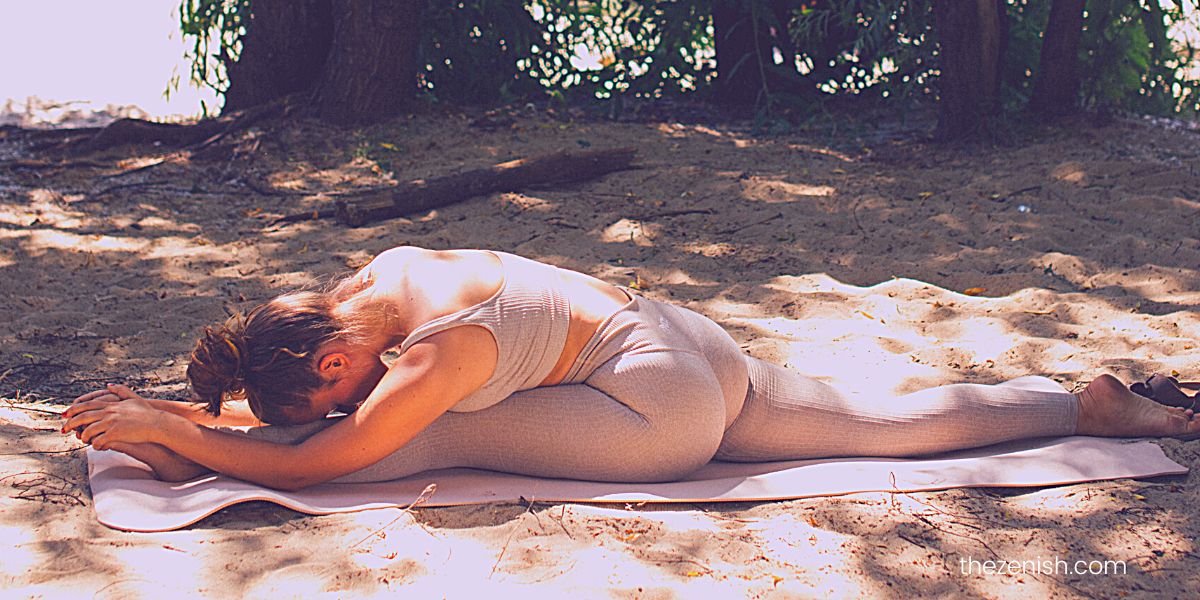
While a good skincare routine is important, it’s not the only factor that affects the health of your skin.
Your lifestyle habits also play a big role! Here are some tips for lifestyle changes that can help keep your skin looking and feeling its best:
- Stay hydrated: Staying hydrated and drinking plenty of water goes a long way if you’re looking for healthy, glowing skin. It helps to keep your skin moisturized and can improve the appearance of fine lines and wrinkles.
- Eat a healthy diet: A diet that’s rich in fruits, vegetables, whole grains, and lean protein can help to nourish your skin from the inside out. On the other hand, a diet that’s high in sugar and processed foods can contribute to skin inflammation and breakouts.
- Manage stress: Stress can wreak havoc on your skin, causing breakouts, inflammation, and even premature aging. Take steps to manage stress in your life, whether that’s through exercise, meditation, or other stress-reducing activities.
- Get enough sleep: Sleep is important for skin health because it’s during this time that your skin cells repair and regenerate. Aim for 7-8 hours of sleep per night to help keep your skin looking its best.
- Protect your skin from the sun: Sun damage can cause a host of skin problems, including premature aging and an increased risk of skin cancer. Wear sunscreen with an SPF of at least 30, and reapply every two hours if you’re spending time outside.
- Exercise regularly: Exercise can help to improve circulation and promote healthy skin. Plus, it’s a great way to manage stress!
Remember, taking care of your skin is about more than just what you put on your face.
By making healthy lifestyle choices, you can help to support the health of your skin from the inside out.
So go ahead, drink that water, eat those veggies, and get that beauty sleep! Your skin will thank you.
6 Common skincare routine mistakes to avoid

Sometimes we can inadvertently make mistakes that can harm our skin instead of helping it.
Here are some of the more common skincare mistakes you should avoid:
- Over-cleansing: While it’s important to keep your skin clean, over-cleansing can strip away the natural oils that keep your skin moisturized and protected. Stick to cleansing twice a day and avoid harsh scrubs and exfoliants.
- Skipping Sunscreen: The sun’s harmful UV rays can cause all sorts of damage to your skin, including premature aging and an increased risk of skin cancer. Make sure to wear sunscreen with at least SPF 30 every day, even when it’s cloudy outside.
- Picking at pimples: We’ve all been there – you see a pimple and just can’t resist the urge to pick at it. But doing so can actually make the problem worse, causing inflammation and scarring. Instead, treat pimples with a spot treatment and let them heal on their own.
- Not moisturizing enough: Even if you have oily skin, it’s important to moisturize to keep your skin hydrated and protected. Look for a lightweight, oil-free moisturizer if you’re worried about adding extra oil to your skin.
- Using too many products at once: It can be tempting to try every new skincare product that hits the market, but using too many products at once can be overwhelming for your skin. Stick to a simple routine with just a few key products that are right for your skin type.
- Sleeping with makeup on: We’ve all been guilty of this at some point, but sleeping with your makeup on can clog your pores and cause breakouts. Make sure to cleanse your skin before bed, no matter how tired you are.
Remember, taking care of your skin is a process of trial and error.
By avoiding these common skincare mistakes, you can help to keep your skin healthy and looking its best.
So go ahead, treat your skin with care and it’ll thank you!
Final thoughts
Congratulations, you’ve made it to the end of this beginner’s guide to building a skincare routine for all skin types!
Remember, taking care of your skin isn’t only important for its appearance, but also for its health.
By following the basic steps of a skincare routine, choosing products that are right for your skin type, and making some lifestyle changes, you can help your skin look and feel its best.
And don’t forget to avoid common skincare mistakes like over-cleansing, skipping sunscreen, and using too many products at once.
With a little bit of trial and error, you’ll find the perfect skincare routine that works for you and helps you achieve the healthy, glowing skin you deserve.
So go ahead, treat yourself to a little self-care and take the time to pamper your skin. Your future self will thank you for it!

